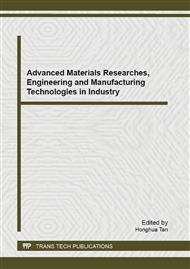p.675
p.681
p.687
p.693
p.699
p.704
p.711
p.717
p.721
Analysis of Magnetic Field in Dry-Reed Relay Application Circuit
Abstract:
To the problem of multiple dry-reed relays electromagnetic interference in application circuits, we present an effective method to reduce the electromagnetic interference in this paper. The method is alternating permutation matrix of dry-reed relays. The paper describes the cause of electromagnetic interference of dry-reed relays. Using the offset of electric polarity alternation principle, we put forward the method for reducing electromagnetic interference. The method is applied to a multi-functional physiotherapy instrument. By experiments, experimental result shows that the degree of electromagnetic interference is reduced along with the increase in the number of dry-reed relays.
Info:
Periodical:
Pages:
699-703
Citation:
Online since:
September 2013
Authors:
Price:
Сopyright:
© 2013 Trans Tech Publications Ltd. All Rights Reserved
Share:
Citation:


